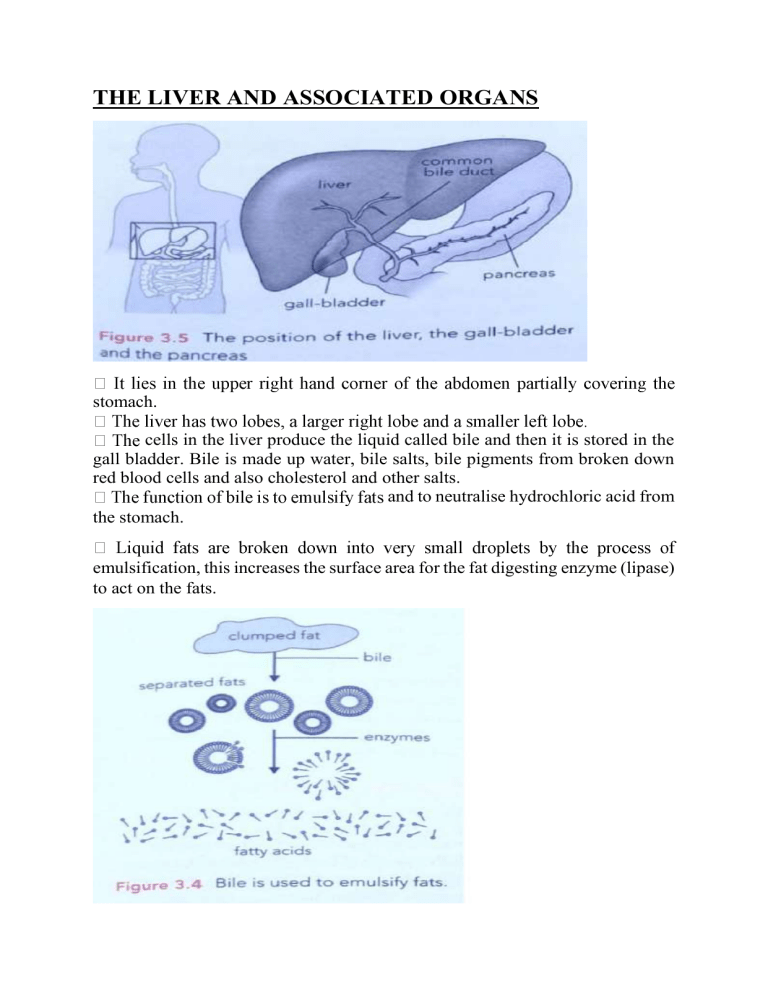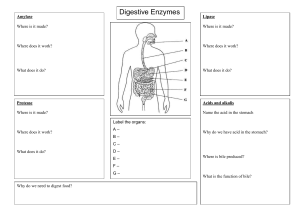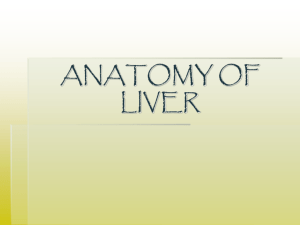
THE LIVER AND ASSOCIATED ORGANS stomach. cells in the liver produce the liquid called bile and then it is stored in the gall bladder. Bile is made up water, bile salts, bile pigments from broken down red blood cells and also cholesterol and other salts. and to neutralise hydrochloric acid from the stomach. emulsification, this increases the surface area for the fat digesting enzyme (lipase) to act on the fats. s amino acids (proteins) are deaminated into glucose and urea. excretion. preservatives are absorbed and neutralised in the liver. Gall Blader It is a bag attached to the lower surface of the liver. It stores bile that has been produced in the liver, bile is continuously channelled into the gall bladder from the liver via the bile duct. When large amounts of bile are required for digestion the bile duct contracts forcing bile through the common bile-pancreatic duct into the duodenum. The gall bladder has only two main functions, storing bile until it is needed and absorbing water and ions to concentrate bile. Pancreas The pancreas has both exocrine and endocrine functions. It is an exocrine organ in the sense that it secretes enzyme rich pancreatic juice into the duodenum to help with the process of digestion. It is an endocrine organ in the sense that it secretes the hormones insulin and glucagon directly into the blood stream, these help to control glucose levels in the blood stream. Pancreatic juice contains the following enzymes: o Lipase – hydrolyses lipids to glycerol and fatty acids. o Amylase – hydrolyses any remaining starch into maltose. o Trypsin- hydrolyses poly peptides into tripeptides and dipeptides.





